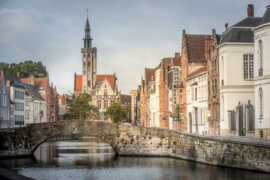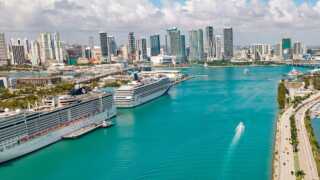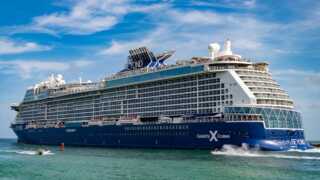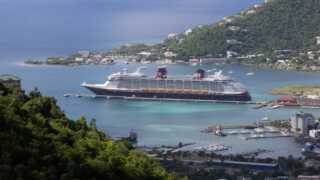For 800 years, the belfry in Bruges has stood as a sentinel looking down at the city’s comings and goings. Its long shadow caresses the intricate brickwork buildings and Gothic architecture surrounding the Market Square. The clock face quietly marks the passing of time, while the chiming bells are the proud symbol of the city’s power and prosperity.
Last year, an incredible 8 million visitors thronged to the UNESCO-designated city to gaze in wonder at the art and architecture and explore its cobbled streets. The majority of day trippers drop in for just a few hours. To prevent this, the mayor, Dirk De Fauw, has introduced measures to discourage overtourism. From January 1, 2027 day guests will be charged €4 ($4.53), the same rate that currently applies to those staying overnight. The latest visitor strategy from Visit Bruges is focused on encouraging longer overnight stays and more off-season travel.
With this at the forefront of my mind, I adopt a slower approach to my short vacation here, savoring every second of my stay. By doing less, I plan to see more and immerse myself fully in the city’s history.
A Bruges State of Mind
Instead of hailing a cab or catching a bus, I pull on my sneakers and walk 20 minutes from the station to Hotel Bourgoensch Hof. It is next to the opulent and pricier four-star Relais Bourgondisch Cruyce. Both establishments make an excellent base for exploring the city and share the same incredible courtyard location, yards from Rozenhoedkaai — Rosary Quay — one of the most Instagrammable spots in the city.
To avoid the crowds, I get up early to check out Market Square and watch the horses paw the ground impatiently, waiting for their first carriage passengers to hop aboard. I plan my ascent of the 366 steps of the belfry to coincide with them opening the doors. This means I have cleverly sidestepped the long queues of day trippers who will pitch up soon. The climb leaves me breathless, but the views from the 272-foot tower are incredible. Afterward, I linger as the carillon bells ring out brightly over the city. I close my eyes and imagine all the people who might have heard them chime over the centuries.
I head to Burg Square and enter the quiet, contemplative calm of the Basilica of the Holy Blood. Inside the inner sanctum, there’s a sacred relic said to have been collected by Joseph of Arimathea. Next door is the Stadhuis, or city hall, where exquisite murals show notable figures from Bruges’ past. In the neighboring anteroom, an augmented-reality model demonstrates how the city’s prosperity and its connection to the North Sea are intertwined.
Next, I strike out on foot to visit one of four historic windmills in Kruisvest. At Sint-Janshuismolen, I watch flour being ground as it would have been done in bygone days. The surrounding area is a million miles removed from the busy city center, so I delay my return by watching the world go by at the aptly named De Windmolen pub.
Quietly By Canal
No trip to Bruges is complete without taking a boat trip through the serpentine network of canals that thread their way through the city streets. I pass historic landmarks like St. Bonifacius or Lover’s Bridge, and then the Beguinage and Jan van Eyck Square. I languorously stretch my fingers upwards, trying to touch the brickwork as the boat passes under a bridge, and a pristine white swan, a symbol of the city’s wealth, serenely floats past.
To avoid unnecessary stress, I recommend booking a table at….
By Cat Thomson
This is only an excerpt. To see the full feature, subscribe to Porthole Cruise and Travel Magazine.
Appeared first on: Porthole.com





